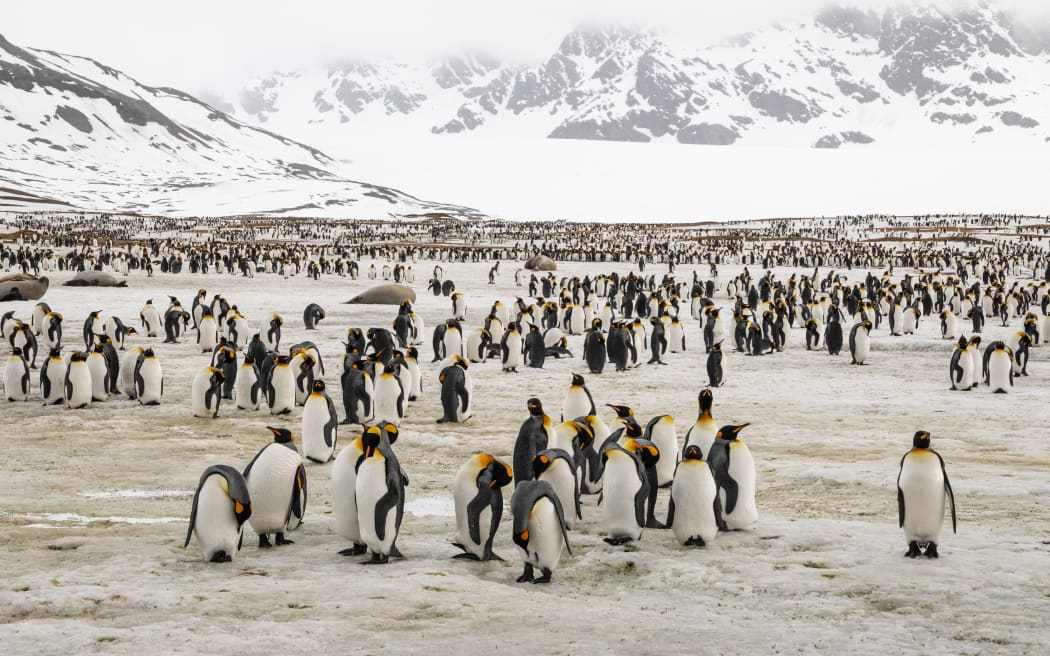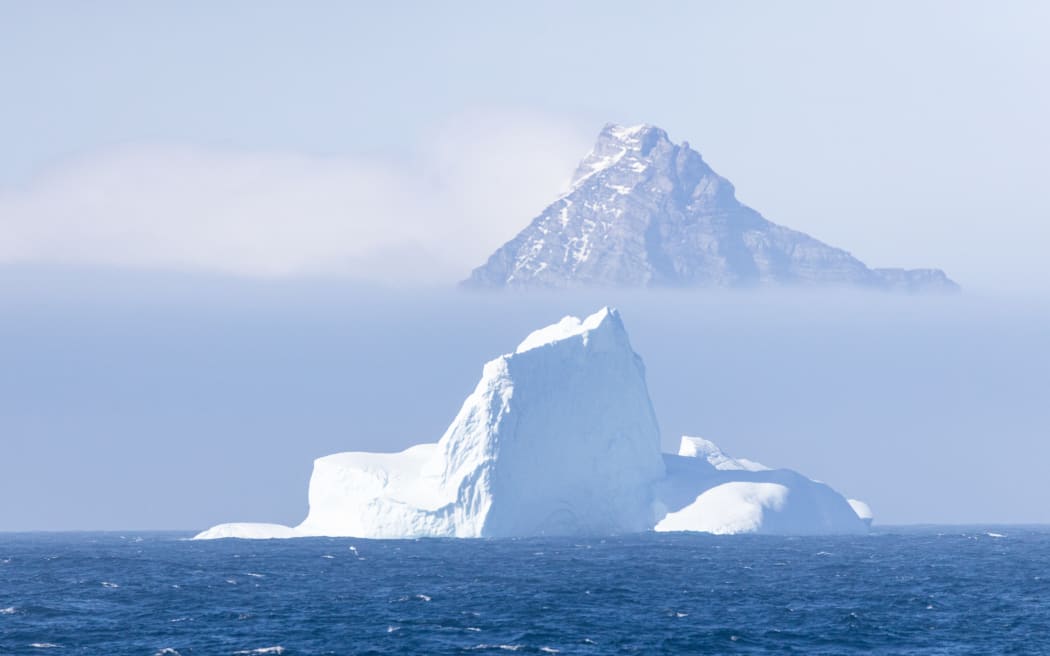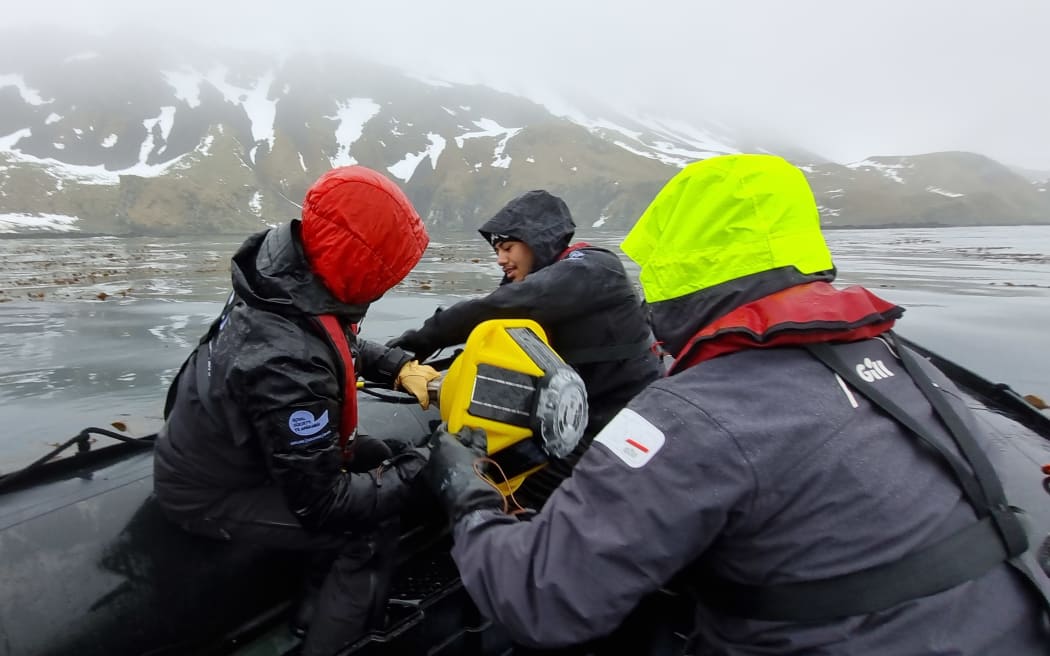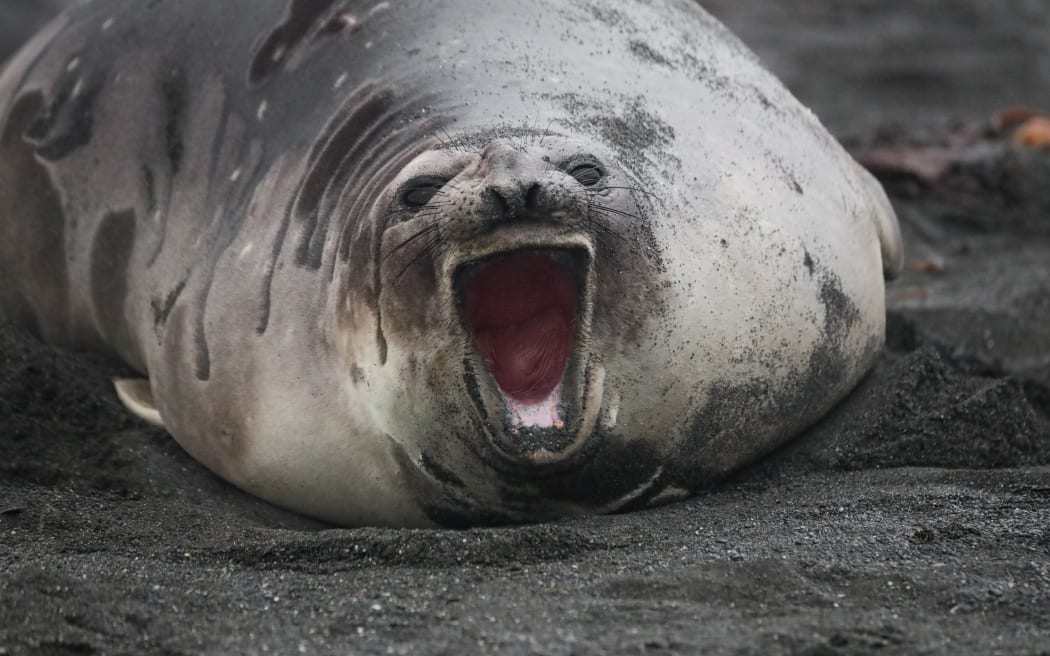
King penguins on South Georgia Island. Photo: © Cole Yeoman / Antarctic Heritage Trust
Follow Our Changing World on Apple Podcasts, Spotify, iHeartRADIO, or wherever you listen to your podcasts
Clarification: In this episode there is a discussion about comparing notes about icebergs taken by Shackleton’s team aboard the Aurora to that of the current expedition. What this fails to clarify is that the Aurora expedition travelled through the Ross Sea, not the Weddell sea, where ice activity is notably different.
It’s home to one of Earth’s most spectacular gatherings of wildlife, with millions of penguins, seabirds and seals crowding the shores.
South Georgia, in the far reaches of the Southern Atlantic, is a wild and isolated island. It’s also the final resting place of famed Antarctic explorer Ernest Shackleton.
To commemorate the 100th anniversary of Shackleton’s last journey, 22 young New Zealanders travelled with the Antarctic Heritage Trust’s 9th Inspiring Explorers Expedition to South Georgia.
In the wake of Shackleton
One hundred years ago, Shackleton’s untimely death at the age of 47 marked the end of the ‘heroic age’ of Antarctic exploration. The period left us inspiring stories of courage and survival – as well as an enduring scientific legacy, which continues to be built upon today.
As part of their expedition to South Georgia, the young New Zealanders continued Antarctic explorers’ tradition of meticulous data collection, by recording rare weather observations from this remote and seldom-visited destination.

An iceberg emerges from the thick sea fog as the Magellan Explorer approaches South Georgia. Photo: © Cole Yeoman / Antarctic Heritage Trust
Accompanied by Kelly Davenport and Peter Fisher, two meteorologists from MetService, the Inspiring Explorers science team conducted regular and comprehensive weather reports using the same equipment, terminology and methods that would have been used in Shackleton’s time. But they also brought some state-of-the art weather equipment, which can collect more data than a heroic-era meteorologist could ever have dreamed of.
Lots of data is important for weather and climate science today. Data feeds into global weather models – complex simulations of the planet’s atmosphere that assist the near-term prediction of weather patterns worldwide. Data collected from remote locations such as South Georgia is particularly impactful, as it helps us fill in the blanks in the map of Earth’s weather.

Inspiring Explorers Sasha Cheng (left), Rykien Amiatu (centre), and Lawrence Rothwell (right) retrieve the MetService spotter wave buoy from the frigid coastal waters of South Georgia. Photo: Peter Fisher
South Georgia: A barometer for change?
South Georgia’s ecosystems are on the frontlines of the climate crisis. Massive icebergs from Antarctica, increasing ocean temperatures, and a reduction in sea ice all impact the availability of food for the vast gatherings of wildlife on the island.
But South Georgia is also a shining beacon of ecological resilience and human-facilitated restoration. In Shackleton’s time, many of the species seen in abundance today were in serious trouble. In recent decades, conservation and biosecurity measures have seen wildlife flourish on the island once again. With climate change on the horizon, is this a ‘calm before the storm’?

Elephant seal, South Georgia Island. Photo: © Cole Yeoman / Antarctic Heritage Trust
Listen to the audio to hear how the members of the Inspiring Explorers Science Team continued the early explorers’ scientific legacy on their voyage to South Georgia with the Antarctic Heritage Trust in 2023.
Learn more:
- Read blog posts and see photos from the Inspiring Explorers expedition to South Georgia.
- The series Voices from Antarctica and Voice of the Iceberg are great listens from the icy south.
- The fate of the West Antarctic ice sheet in a warming world documents scientists figuring out how climate change might impact this part of Antarctica.
- Our Changing World also played an excerpt of the Frozen in time series from the Antarctic Heritage Trust.

